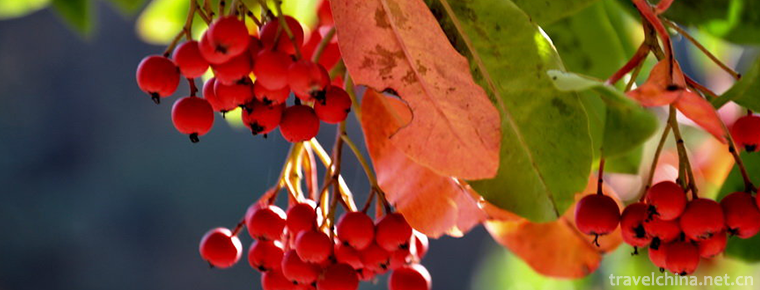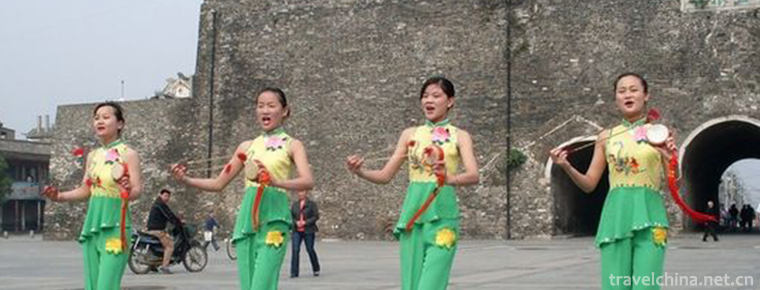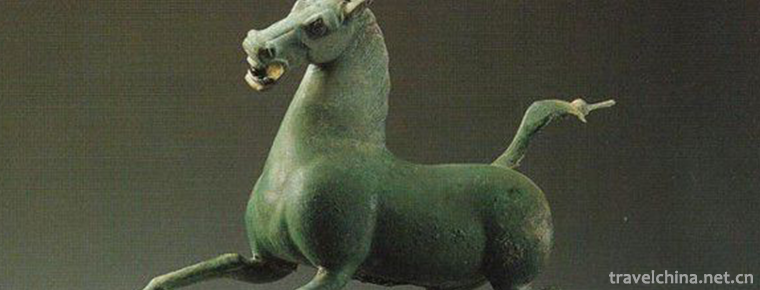Taoranting Park
Taoranting Park
Taoranting Park, located on the northwest side of Taoranqiao in the South Second Ring of Beijing, is a new modern urban garden, which integrates ancient and modern gardening arts and focuses on highlighting the "pavilion culture" of the Chinese nation. It is the earliest modern garden built in the capital of Beijing after the founding of the People's Republic of China. It has the reputation of "Dumen resort".
Taoranting Park was built in 1952, with a total area of 56.56 hectares, including 16.15 hectares of water. It is a famous historical and Cultural Park in Beijing and a national AAAA scenic spot.
Location context
Taoranting Park Management Office is located in the northwest side of Taoranqiao in the second ring south of Beijing, China. It covers an area of 56.56 hectares, including 16.15 hectares of water.
Historical evolution
The Mercy Temple in the Garden was founded in the Yuan Dynasty.
During the period from Kangxi to Daoguang in Qing Dynasty, it was a must-visit place for scholars from all over the country to come to Beijing.
In the thirty-fourth year of Kangxi (1695), Lang Zhongjiangzao, then the supervisor of the kiln factory, built Taoran Pavilion in the Compassion Temple.
Before and after the May 4th Movement, Li Dazhao, Mao Zedong and Zhou Enlai, founders and leaders of the Communist Party of China, carried out revolutionary activities in Tao Ranting.
On January 18, 1920, Mao Zedong and members of the "Auxiliary Society" gathered in Beijing to discuss the struggle to expel Zhang Jingyao, a Hunan warlord. After the meeting, they took a group photo in front of a great locust tree outside the gate of Mercy An.
On August 16, 1920, progressive groups such as Tianjin Awakening Society and Beijing Youth China Society discussed the direction of revolutionary struggle after the May 4th Movement and the joint struggle of various groups in Beihall.
In July and August 1921, through Chen Yusheng, a member of the Youth China Society, Li Dazhao rented two rooms of the South Room of Mercy Inn in the name of his wife, Jin Qixin, who was buried in the tomb of his wife at Taoran Pavilion.
By 1923, Deng Zhongxia, Yun Daiying and Gao Junyu often attended the conference.
In 1952, Tao Ranting Pavilion was renovated and turned into a park.
In 1979, Gaoshi Tomb, Mercy Temple and Yuntu Building in the garden were listed as the second batch of cultural relics protection units in Beijing.
In 1985, the "Famous Pavilion Garden of China" was built in the southwest of the park, covering 10 hectares of land.
In 1994, the park was named Beijing Patriotic Education Base.
In May 2002, it was first announced as a first-class park by the Municipal Garden Bureau. The administration of Taoranting Park belongs to Beijing Garden Bureau.
In 2002, the first batch of 4A class tourist attractions and the capital civilized tourist attractions were awarded by the National Tourism Administration.
Scenic spots
Overview
Taoranting Park has Shengchun Shanfang Scenic Spot, Huaxia Famous Pavilion Scenic Spot, Taoran Scenic Spot, Taoran Scenic Spot, Tanyingliu Golden Scenic Spot and other scenic spots with different characteristics. Among them, the famous Taoran Pavilion is located in the scenic spot of Taoran on the central island of Lake. There are many famous historical sites around the Taoran Pavilion. There are Longshu Temple in the northwest of China. There are Jianjian, Tianni Pavilion, Shanlou, Baobingtang and other buildings in the temple, which are comparable to Taoran Pavilion. There are Heilongtan, Longwangting Pavilion, Nake Temple, Cimei Garden and Zuyuan in the southeast, Fengshi Garden in the southwest, kiln terrace in the north, incense graves and parrot graves in the northeast, as well as modern drunk Guo tombs and Saijinhua tombs. These historical sites came into being earlier than Tao Ranting Pavilion, and some even earlier than Mercy Abbey. They all have the history of literati and poets'chanting, and they have had brilliant periods of leading styles.
Main scenic spots
Shengchun Shanfang Scenic Area
"Shengchun Shanfang" scenic spot is one of the eight major scenic spots in the park, located in the west of the park, is a scenic spot with beautiful roses. "Shengchun Shanfang" scenic spot is dominated by fountains and different kinds of roses. A 3-meter-high main fountain was set up in the central square. With this fountain as the center, the rose planting blocks were scattered. Each planting block was selected from different varieties and colors from the Netherlands.
Huaxia famous Pavilion scenic spot
The famous Pavilion scenic spot in Huaxia is the park's central garden. It is a concentrated imitation of the famous historical pavilions in nine places of six provinces in China, including "Drunken Weng Pavilion", "Lanting Pavilion", "Goosepool Stele Pavilion", "Shaoling Caotang Stele Pavilion", "Canglang Pavilion", "Duxing Pavilion", "Erquan Pavilion", "Blowing Platform", "Bapting Moon Pavilion" and "Baipo Pavilion". These pavilions are modelled on a scale of 1:1. Pavilions and scenic spots in the garden are not only independent but also connected. The bamboo trees are used to divide the pavilions and make the peaks turn around. Each pavilion has its own merits. In 1989, Huaxia Famous Pavilion Garden won the National Design Gold Award.
Taoran Beautiful Scenic Area
Taoran Beauty Scenic Area is located in the central island of Taoranting Lake, which is the representative landscape of the park. The main autumn plants are planted on the island, which is an ecological scenic spot highlighting the theme of Taoran. As a cultural tourist area, there are many historical relics on the island, among which Mercy Temple, Taoran Pavilion and Gaoshi Tomb are the core scenic spots.
Tan Yingliu Golden Scenic Spot
In the scenic area, the ginkgo trees are tall and tall, and the branches and leaves on the crowns are interlaced with each other. This scenic spot was originally a scenic spot in the southern city of Beijing, Heilongtan. "Tan Ying" refers to the old scenery of Heilongtan in Beijing people's memory; "flowing gold" drifts through the meandering stream of ginkgo forest covered with golden leaves. There are trestles and wooden platforms in the forest for visitors to rest. The scenic spot also has a tea house reading room, Taiji Stadium, footpath and other leisure sports venues. Flower Street planted a variety of colorful flowers.
Main attractions
Taoranting Park
Tao Ran Pavilion is a famous Pavilion in Qing Dynasty and one of the four famous pavilions in China. In the reign of Emperor Kangxi in the Qing Dynasty (1695 AD), Lang Zhongjiangzao, the Ministry of industry supervised by the kiln factory at that time, built the pavilion in a compassionate temple, and took Bai Juyi, a poet of the Tang Dynasty, as his poem "waiting for the juhuang family to be mature and the emperor to be intoxicated" as the title of the pavilion "Taoran". This is also the origin of the name of the park. The black plaque on the pavilion is the words left by Mr. Qi Baishi. The couplet under it is written by Emperor Guangxu's teacher Weng Tonghe: "The ancient temple of Yanzang is inhumane and has a month to walk on the deep hall." The golden plaque of "Taoran" in the pavilion was written by Jiangzao, who was the founder of the pavilion. The following is a couplet left by Lin Zexu, a famous non-smoking general. There are also beautiful Soviet-style paintings on the pavilions and beams. They are: chrysanthemum picking, Eight Immortals crossing the sea, Taibai drunk and Liu Hai opera golden toad. There are many stone carvings on the walls on both sides of the pavilion, which are very precious.
Mercy house
Mercy Temple is an ancient temple founded in the Yuan Dynasty. It has a history of more than 700 years. It has four small courtyards east of the mountain gate. The three open houses on the west side of the temple are Taoran Pavilion. The building was originally built by Lang Zhongjiangzao, Ministry of Engineering, in the reign of Emperor Kangxi in the Qing Dynasty (1695 A.D.). The total area of the temple is 2700 square meters. The total area of the temple is more than 800 square meters. The main buildings are Guanyin Hall, Zhunti Hall, Wenchang Pavilion and Taoran Pavilion. Since the Qing Dynasty, it has been a place for feudal scholar-bureaucrats and scholars to gather and visit, leaving a lot of poems and works. In modern times, especially after the May 4th Movement, Li Dazhao, Mao Zedong, Zhou Enlai and other older generations of revolutionaries carried out revolutionary activities here successively, and became a memorable revolutionary site in Beijing.
By the eve of liberation, there were many broken walls and buildings. After liberation, along with the new construction of Taoranting Park, Mercy Temple gained new life. As a revolutionary memorial site, the temple was rebuilt and restored in 1978 to the revolutionary showroom, which opened the garden history showroom.
Buddism godness Guanyin Temple
Guanyin Hall is the main hall of the Mercy Temple. The Guanyin Hall originally worshipped three Western nobles: Mahayana Buddha Amitabha, Mahayana to Bodhisattva and Guanyin Bodhisattva. In Daoguang 28 years, the temple is "big and comfortable". In 43 years of Kangxi, the temple was changed to "considerable freedom".
Hall of approval
Zhunti Hall is situated in the South and north, opposite Guanyin Hall. "Quantity" is a transliteration of Sanskrit, meaning purity. The Chunti Hall originally worshipped three Bodhisattvas such as Chunti. The temple is "Quantitative Palace". Dianlian couplet is: "Fayu Ciyun blessed all living beings; Jinlun Baogai two precepts Changming". Now it is the exhibition room of the park's stele inscriptions.
Wenchang Pavilion
Wenchang Pavilion sits in the north facing the south, with three rooms (8.1 meters) wide and one room (44 meters) deep. It is about 10 meters high and its total building area is 83.28 square meters. There is a small square Pavilion in front of the pavilion. Upstairs, facing south, there is a corridor overlooking it. The exposed wooden beams and purlins of Wenchang Pavilion, as well as the ceilings of pavilions and galleries, are decorated with colorful paintings, which are quite beautiful. In addition, the pavilion is small but quite characteristic. Therefore, although it does not have the shape of eaves and arches, it is also elegant and elegant. Wenchang Cabinet is dedicated to the emperor Wenchang (also known as Emperor Zitong) and Kuixing. These two gods are only the gods who dominate the rise and fall of the literary movement and the position of merit and fame, and they are most respected by scholars. Therefore, in the feudal era, it has always been a shrine worshipped by candidates entering Beijing for the examination. Wenchang Pavilion used to have hundreds of "Wenchang Pavilion Signed Poems" which predicted the fate of people. They are all seven-character quatrains composed of ancient poems and passed down to Ji Xiaolan. The monks wrote these poems as "Wen Chang Ling Zhuan" for the people who came to ask the divination to draw lots.
Cloud painted building
The Royal Garden Architecture of Yun Painting Building was built in the Qianlong Period of Qing Dynasty. It used to be on the east coast of Zhongnanhai, with double-storey corridors, eaves and carved beams. It was exquisite and beautiful. It was the place where the emperor visited Taiye Qingchi and wrote, painted and chanted poems. In 1954, due to the need to demolish the building, architect Liang Sicheng considered the unique structure and style of the building, and proposed to retain it. Premier Zhou agreed with him, and together with Liang Sicheng Taoran Pavilion personally selected the site to complete the relocation of the building to the western Hunan coast of the park. In 1984, Yuntu Tower and Qingyin Pavilion were listed as the cultural relics protection units in Beijing. In 2000, the park was renovated again with oil decoration and Han Baiyu railings, which made it more magnificent.
Liao Dynasty
The full name of the Sutra Building is: therefore, the Great Mercy Dharma Tower is superior to the Great Mercy Dharani Tower. It was built in memory of the benevolent monk. The building is engraved with the life stories of the wise monk. The monk of Cizhi, named Wei Mingzhen, went to the palace to preach the Dharma in the year of Yeluhongji of Liao Dao Zong, and conferred the title of Ziyi Cizhi. In the second year of the death of a merciful monk, his disciples built this building in front of his grave in memory of him. In 1964, when Guo Moruo, a famous contemporary historian, came to Taoranting, he said, "The Liao Building is of great historical value. It is an important coordinate to determine the location of the capital site in Jinzhong, and it is also an important level in the history of Beijing."
Jing Dynasty
Jingzhu is a kind of stone carving of ancient religion, which was founded in Tang Dynasty. The Buddhist scriptures in the nunnery are eight-faced. The building is carved with four Buddhist statues and four verses in Sanskrit and Chinese. The four statues of Buddha are all spiral-coiled, sitting cross-kneed, with a flame halo lining the back of their brains. They are calm and lifelike. In accordance with the specific meaning of Buddhism, they make different gestures. The four passages are Guanyin Bodhisattva Manlu Dharani, Pure Dharma Dharani and Zhitorch Tathagata Heart Breaking Hell Dharani. But one side of the text has been blurred, only to see the words "nine years of Tianhui". In Chinese history, only Liu Jun, the emperor of the Northern Han Dynasty, and Yan Sheng, the Jin Dynasty, had used the name of Tianhui, but the regime of the Northern Han Dynasty only existed for 29 years, and the region did not cover the scope of Beijing. So the academic circles think that this classical building is a relic of the Jin Dynasty, which is more than 800 years old. There are two halls on both sides of the building.
Kiln platform
Emperor Zhu Di of the Ming Dynasty once set up a black kiln factory in Taoranting area, specially in charge of fired bricks and tiles, and because there is a tall kiln temple on the hill ahead, people call this hill "kiln terrace". Over time, the kiln terrace has become the representative of the black kiln factory.
In the reign of Kangxi, the kiln factory was handed over to the kiln households themselves, and then declined. In the reign of Qianlong, some people spontaneously built arbors and set up tea sets on the kiln terrace. Many people liked to come here and drink tea. In history, many poems and phrases about climbing the kiln terrace were left, such as Wang Yuyang's poems in The Heiyao Factory, which wrote: "Cold clouds, sad past and present, take visitors to Wanlitai with them." "Kiln terrace overlooking" has gradually become a famous scenic spot in Nancheng.
In order to restore the historic site after liberation, the Yaotai Teahouse was rebuilt in 1961, and it was renovated twice in 1982 and 1984. A kiln excavated in the Tang Dynasty was also placed in the courtyard of the teahouse, which has certain historical value.
Sai Jinhua tomb
Saijinhua Tomb is located on the south slope of Jinqiudun Pier, west of the incense mound and the parrot mound. The tomb is made of marble. In front of the tomb stands a huge granite monument 1.8 meters high. Now the tombstone is displayed in the exhibition room of the stone carvings in Cipitian.
Traffic routes
East Gate
Taiping Street or Taoran Bridge North Station: 14, 40, 66, 70, 102, 106, De 13, Te 5, etc. can be reached.
North Gate
To Taoranting Park North Gate Station: 40 Road, 59 Road, De 13 Road can be reached.
South Gate
To the South Gate of Taoranting Park: 84 Road, 122 Road, 458 Road, 485 Road (one-way), 692 Road, 741 Road, Yuntong 102 Road, Te3 Road, Te12 Road, Te17 Road (one-way), 821 Road, 958 Road, 997 Road, Night 15 Road can be reached.
Pictures From:
http://bbs.fengniao.com/forum/10564616.html








-
Qinhuangdao Shanhaiguan Scenic Area
Shanhaiguan, also known as Yuguan, Yuguan and Linluguan, is located 15 kilometers northeast of Qinhuangdao City, Hebei Province.
Views: 164 Time 2018-11-24 -
Mount QianQianshan Mountain
Mount Qian,Qianshan Mountain is located 17 kilometers southeast of Anshan City, Liaoning Province, with a total area of 44 square kilometers..
Views: 163 Time 2018-12-04 -
Shanghai Ocean Aquarium
Shanghai marine aquarium is located at 1388 Lujiazui Ring Road, Pudong New Area, Shanghai, China, next to the Oriental Pearl Tower. Singaporean Xingya Group and Chinese Poly Group have jointly.
Views: 187 Time 2018-12-19 -
Qingshuihe Ming Great Wall Site
The site of the Great Wall of the Ming Dynasty begins at Jiayuguan in Jiayuguan City in the west, passing through Jiuquan, Gaotai, Linze, Zhangye, Shandan, Yongchang, Minqin.
Views: 177 Time 2019-02-07 -
Tangjiahe Scenic Area
Tangjiahe Scenic Area is located in Qingchuan County, Guangyuan City, Sichuan Province. Subtropical monsoon climate. National AAAA-level tourist attractions. Established in 1978, it covers a total are.
Views: 253 Time 2019-02-13 -
Western Grand Canyon
Western Grand Canyon Hot Spring is a national AAAA-level tourist attraction, located in Shuifu City, Yunnan Province, 32 kilometers away from Yibin City, Sichuan Province.
Views: 121 Time 2019-02-25 -
Buzkashi
One of the folk sports events in Xinjiang, China. Although there is no written record of sheep on foot, it has been examined in some areas of northern Xinjiang, which has continued to this day, and is.
Views: 127 Time 2019-04-26 -
Fengyang folk songs
Fengyang folk song is a traditional folk song in Anhui Province. Fengyang folk song in Fengyang flower drum is one of the important components of Fengyang folk song.
Views: 207 Time 2019-04-29 -
Pulangorgozi
Pulangorgozi, also known as "fruit harmony", is a kind of self-entertaining dance, which originates from Pulan County and is widely spread in Ali countryside. It is a kind of hand in hand, s.
Views: 247 Time 2019-06-09 -
Qin an Xiaoqu
Qin'an Xiaoqu, also known as the old tune of Qin'an, is one of the national intangible cultural heritages. It is an ancient traditional folk art variety formed and mainly popular in Qin'an and other c.
Views: 175 Time 2019-06-10 -
Bronze Repair and Reproduction Techniques
Traditional bronze repair technology mainly includes shaping, splicing, matching, bonding (welding), strengthening, old and other processes, and sometimes involves rust removal, scalding (surface seal.
Views: 131 Time 2019-06-11 -
Bao Zheng Bao Qing Tian
Bao Zheng (999 - July 3, 1062), He Xi Ren. Luzhou Hefei (now) Anhui Hefei Feidong People. Northern Song Dynasty Famous ministers..
Views: 172 Time 2019-09-11











